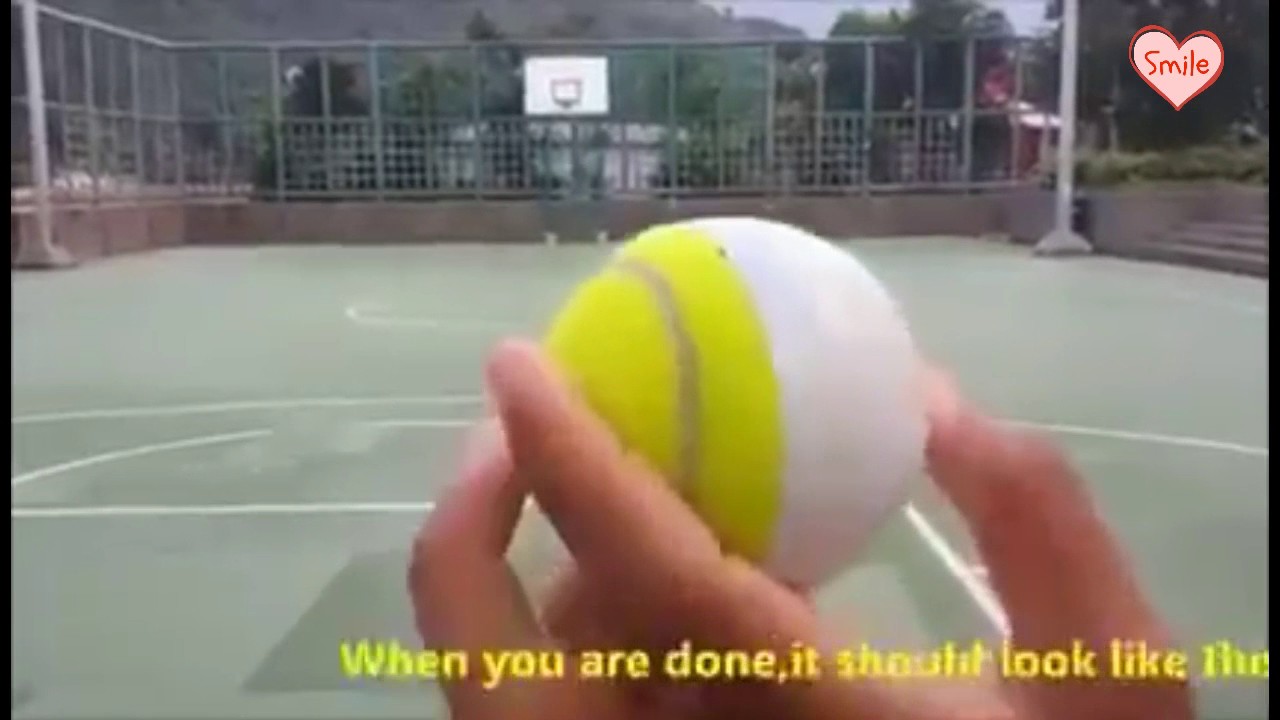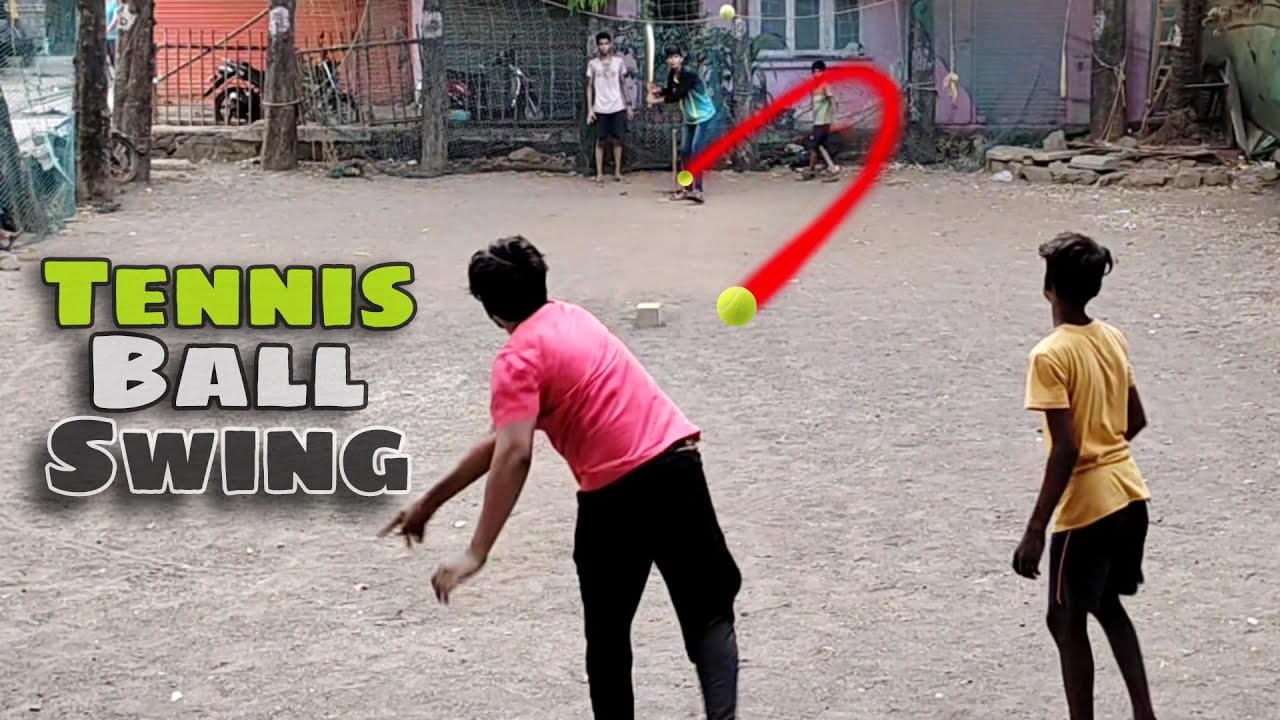Welcome to the world of cricket! Today, we’re diving into an essential skill that can make or break your game: swinging the ball. Whether you're a beginner looking to impress on the pitch or an experienced player wanting to fine-tune your skills, understanding the art of swinging a tennis ball can be incredibly beneficial. Plus, we've got some fantastic Dailymotion videos lined up to help you visualize and master these techniques. Let's get started!
Understanding the Basics of Swinging a Ball

Swinging a cricket ball is all about manipulating the airflow around it to create movement in the air. While it might seem like a daunting task, once you get a grasp of the basics, it can become second nature. Here are some key concepts to consider:
- Ball Condition: A new ball will swing differently than an old one. A shiny side helps in producing more swing. Maintain one side smooth and shiny.
- Grip: How you hold the ball can greatly affect its swing. Use your fingers to apply pressure on one side for reverse or conventional swing.
- Release: The way you release the ball from your hand is crucial. A straight seam position will aid in achieving the desired swing.
- Bowling Speed: Generally, faster deliveries tend to swing more due to increased air pressure around the ball.
Let’s break it down into two main types of swing:
| Type of Swing | Description |
|---|---|
| Conventional Swing | This occurs when the ball is relatively new and shiny, swinging towards the shiny side and away from the rough side. |
| Reverse Swing | This happens with an older ball that has one shiny side and one rough side, often swinging in the opposite direction. |
Understanding these basics is essential for honing your skills. By using the tips and techniques shared in accompanying Dailymotion videos, you'll be more prepared to swing that tennis ball with ease! Stay tuned for more insights!
Also Read This: How the Universe Works Asteroids Watch the Video on Dailymotion
Choosing the Right Tennis Ball

When it comes to mastering the art of swinging a tennis ball for cricket, the type of tennis ball you choose can make all the difference. Not all tennis balls are created equal, and picking the right one can significantly influence your practice sessions and overall performance.
Here are some key factors to consider when selecting a tennis ball:
- Type of Tennis Ball: There are various types of tennis balls available, such as yellow felt balls for regular play and practice balls designed specifically for training. Look for practice balls that are slightly softer; they are easier to grip and control when swinging.
- Weight: A standard tennis ball weighs around 58-60 grams. However, some training balls might be heavier or lighter. It's essential to find a ball that feels comfortable when you’re bowling.
- Condition: Make sure to use new or barely used balls. A worn-out ball can lead to unpredictable movement, which is not ideal for mastering your swing.
- Brand: While brand preference can be subjective, some brands offer better quality balls than others. Consider investing in reputable brands that are known for their durability and bounce quality.
To sum it up, choosing the right tennis ball is crucial for your training. A well-selected ball that suits your needs can enhance your skills and confidence when practicing your swing techniques. Remember that what works for one person may not necessarily work for you, so be open to experimenting with different types!
Also Read This: How to Make a French Braid Step by Step Using Dailymotion’s Easy Method
The Technique Behind Swinging a Tennis Ball
Swinging a tennis ball like a pro can be a game-changer in cricket practice. The beauty of this technique lies not just in the physical motions but also in the nuances involved. Here's a breakdown of the essential steps to perfect your swing.
1. Grip: Start with a proper grip on the ball. Hold it with your index and middle fingers slightly spread, and ensure your thumb is resting on the seam. This grip provides the control needed for executing the swing.
2. Bowling Action: Your technique starts with your run-up. Approach the crease at a comfortable speed, and as you get closer, begin to position your body and arm for the ball delivery. Ensure your non-bowling arm points towards your target to maintain balance.
3. The Release: As you deliver the ball, focus on your wrist position. A locked wrist will provide stability, but a slight flick during release can help generate that valuable swing.
4. Follow Through: After releasing the ball, ensure your arm follows through in the direction of your target. Your body weight should shift forward, adding momentum to your delivery.
It’s important to practice these techniques over and over to build muscle memory. Watching Dailymotion videos that demonstrate these techniques can be incredibly helpful. You'll see professional bowlers and trainers break down these steps to offer visual and practical insights.
Remember, practice is key! Regularly incorporating these techniques will not only help you master the art of swinging a tennis ball for cricket but also enhance your overall bowling skills.
Also Read This: How to Search Dailymotion Videos and Find Content Easily
5. Practical Tips for Effective Swinging
Mastering the art of swinging a tennis ball for cricket can be an exhilarating journey! Here are some practical tips to help you get the most out of your practice sessions and really sharpen your swinging skills:
- Grip Matters: Your grip can make or break your swing. Ensure that you hold the ball in a way that allows for maximum wrist movement, which can help create the necessary spin. Try the seam position for better control.
- Body Position: Stand with your feet shoulder-width apart. As you run up, keep your focus on the target, which helps in maintaining balance and direction.
- Arm Action: Your non-bowling arm plays a crucial role in rhythm. Swing it in sync with your bowling arm. When you follow through, make sure your bowling arm comes back high.
- Practice with Variation: Don't just stick to one type of swing. Go for conventional, reverse, and even off-cutters. Each variation will help you develop a more versatile approach.
- Focus on Speed and Motion: Work on your run-up pace to build momentum. A slower pace can lead to less effective swinging, while a good flow can enhance your swing’s effectiveness.
Remember, swinging a tennis ball requires patience and practice. Consistency is key in really honing these skills over time!
Also Read This: How to Download from Dailymotion with Ease
6. Utilizing Dailymotion Videos for Better Learning
Dailymotion is a fantastic resource for visual learners wanting to improve their cricket skills. Here’s how to leverage this platform effectively:
- Search for Tutorial Videos: Use specific keywords like "tennis ball swing bowling" to find focused content. Look out for videos that break down techniques step-by-step.
- Watch Experienced Players: Observing seasoned players offers invaluable insights. Tune into their arm placements, grips, and body postures as they bowl.
- Subscribe to Channels: Follow channels dedicated to cricket coaching. These channels often provide series on various techniques including swinging.
- Engage with the Community: Many videos have comment sections where viewers share tips and ask questions. Joining these discussions can deepen your understanding.
- Practice Along: Use the videos as a guide for your practice sessions. Try to replicate the techniques demonstrated, and it may help to pause the video at critical points.
With Dailymotion, you have the power of visual learning at your fingertips! So, kick back, watch, learn, and take your swinging skills to the next level.
Also Read This: How to Publish a Video on Dailymotion with Step-by-Step Help
Common Mistakes to Avoid
Learning to swing a tennis ball in cricket can be incredibly rewarding, but it's also easy to fall into certain traps. Let's look at some common mistakes players make and how to avoid them, so you can get the most out of your practice.
- Incorrect Grip: Many players underestimate the importance of grip. A poor grip can hinder your ability to control the ball’s direction. Make sure your fingers are spread comfortably and that you're holding the ball with your seam positioned correctly.
- Improper Ball Position: The position of the ball in your hand can greatly affect its swing. Holding it too high or low may result in decreased swing efficacy. Aim for that sweet spot, making sure the seam is upright.
- Overexerting Yourself: One common mistake is trying to generate swing by over-muscling the ball. Remember, finesse often beats brute strength in cricket. It’s all about the wrist movement and follow-through.
- Ignoring the Bowler's Run-Up: If you're focusing only on the ball, you might be neglecting the necessity of a proper run-up. A steady run-up allows for better timing and coordination, which are crucial for effective swinging.
- Neglecting the Follow-Through: A poor follow-through can lead to inaccurate deliveries. Ensure that your arm finishes moving in alignment with the target area you’re aiming for.
By becoming aware of these common pitfalls, you can adjust your technique and improve your swinging skills. Regular practice, along with watching instructional videos on platforms like Dailymotion, can help you refine your skills effectively.
Conclusion: Putting It All Together
As we reach the end of our journey into the art of swinging a tennis ball for cricket, it's time to reflect on everything we've learned. Mastering this skill doesn't just rely on understanding the mechanics; it requires consistent practice, perseverance, and a mindset open to learning from mistakes.
To summarize:
| Key Elements | Importance |
|---|---|
| Correct Grip | Essential for maintaining control over the ball |
| Ball Position | Affects swing; find that perfect spot! |
| Finesse Over Strength | Focus on technique rather than force |
| Proper Run-Up | Sets the pace and rhythm for delivery |
| Follow-Through | Ensures accuracy and consistency of the delivery |
Don't forget to incorporate your learning by watching Dailymotion videos and practicing regularly. Each session is an opportunity to refine your skills; don't be disheartened by failures but treat them as stepping stones toward mastery. With persistence, you'll be swinging that tennis ball like a pro in no time!
 admin
admin








